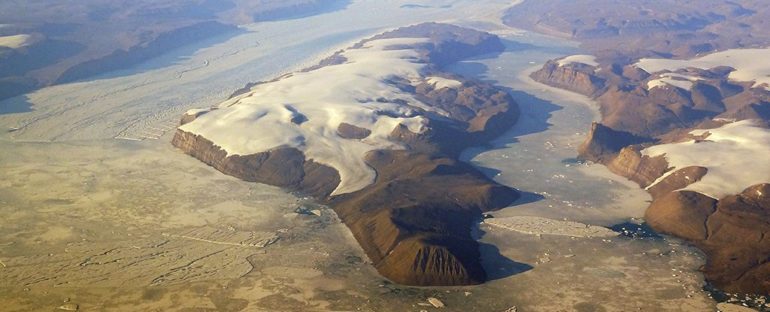The stretch of Arctic ice between Greenland and the Canadian Arctic Archipelago is known as ‘the Last Ice Area’, thought by scientists to have the best chance of surviving the climate crisis – but new research suggests it could be more vulnerable to disappearing than previously thought.
It’s the oldest and the thickest stretch of ice in the Arctic region, and up to this point it’s managed to survive even the warmest summers on record. There are even hopes that it will eventually act as the foundation of a spreading Arctic ice region, if we can get the planet to begin cooling down again.
Maybe not, according to a new analysis of satellite data looking specifically at ice arches along Nares Strait, which is 40 kilometres (25 miles) wide and 600 kilometres (373 miles) long.
Ice arches aren’t traditional arches at all, they’re key patches of ice that form seasonally and prevent other pieces of ice from entering a body of water. The Nares Strait and its arches could play a crucial role in whether or not the Last Ice Area survives through the peak of global warming.
“The ice arches that usually develop at the northern and southern ends of Nares Strait play an important role in modulating the export of Arctic Ocean multi-year sea ice,” write the researchers in their published paper.
“We show that the duration of arch formation has decreased over the past 20 years, while the ice area and volume fluxes along Nares Strait have both increased.”
Simply put, the Nares Strait ice arches that effectively hold the Last Ice Area in place are becoming less stable. The risk is that this old ice will not just melt in place, but also break up and drift southwards into warmer regions, speeding up the melting process.
The ice arches look like bridges on their sides, blocking the movement of ice from north to south. The problem is that the arches are breaking up earlier in the year than they have previously, allowing more ice to flow through the Nares Strait.
Every year, according to observations, the ice arches are breaking up a week earlier than before. The ice blockage is becoming thinner and less of a barrier, and that is leading to changes further north – it’s estimated that ice movement in the Last Ice Area is increasing twice as fast as it is in the rest of the Arctic.
“This very old ice is what we’re concerned about,” says physicist Kent Moore, from the University of Toronto in Canada. “The hope is that this area will persist into the middle part of this century or even longer.
“And then, hopefully, we’ll eventually be able to cool the planet down. The ice will start growing again, and then this area can act as a sort of seed.”
The disappearance of the Last Ice Area would have a profound impact on the surrounding ecosystem in this part of the world: from polar bears to the ice algae that supplies carbon, oxygen and other nutrients to the environment, the loss would be a huge one.
It’s another stark reminder of the damage that warming temperatures – driven by our increased greenhouse gas emissions – are having on the poles and the rest of the planet. The rate of ice loss is matching some of our worst case scenario models, and there are fears that Arctic ice could vanish as early as 2035.
If we’re to avoid doing further damage and the catastrophic consequences it would cause, there’s only one solution: cut down greenhouse gas emissions and start to arrest the rapid rise in average temperatures across the globe. Then, the Last Ice Area might hang on.
“The scale is so huge and the region is so remote,” says Moore. “The only thing we can do is cool the planet down. Then the arches will hopefully naturally form again.”
The research has been published in Nature Communications.



